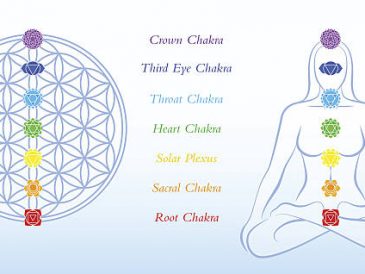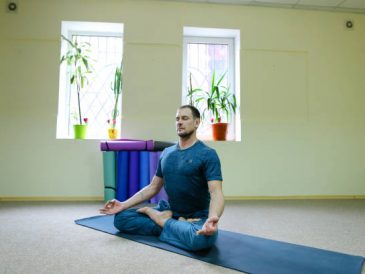Although I was recently diagnosed with endometriosis and its sister condition, adenomyosis, I have suffered from the symptoms since the 11th. Because of this, I am familiar with their effects on daily life. It can be difficult to find something to relieve the pain. Yoga has been a lifesaver for me. Although yoga is not a cure, it can help with endometriosis pain and other everyday discomforts.
What is endometriosis, and how can it be treated?
Understanding endometriosis in its entirety is important to understand how yoga can help.
Endometriosis refers to a condition in which tissue similar to the uterus lining (endometrial-like) grows outside the uterus. These lesions differ in structure and behavior from normal endometrium, which is shed during menstruation. Endometriosis tissue may cause pain, infertility and organ dysfunction. It can also be caused by inflammation, invasion of structures within the body, scar tissue, and inflammation.
Endometriosis affects approximately 1 in 10 women assigned a female gender at birth. It is very rare for people who were born to a male. Eight doctors often diagnose endometriosis.
Your doctor may suspect endometriosis. However, surgery is necessary to confirm the diagnosis.
Many theories can explain endometriosis. It is most likely a combination of an embryonic origin (tissue you were born with) and other genetic or environmental factors. Although the commonly held belief that endometriosis can be caused by menstrual backflow (“reflux menstruation”) has been disproven, it is still widely used to inform many available treatments.
Endometriosis symptoms
Early detection can be made possible by education and awareness. It is important to be open about your symptoms. These are just a few symptoms of endometriosis.
- Periods of intense pain (pelvic pain, cramping and lower back pain, as well as abdominal pain)
- Pain during ovulation and two weeks after your period
- Your cycle may cause leg pain, neuralgia (nerve symptoms), or other discomforts.
- Back pain or hip pain
- Your cycle may cause shoulder/chest pains or shortness of air.
- Sex pain can occur during or after sex
- Periods with thick blood clots (often darker)
- Painful bowel movements and painful urination
- Excessive bleeding
- Chronic pain and fatigue
- Constipation and diarrhea
- Bloating
- Nausea and vomiting
- Urinary frequency, retention, and urgency that is unusual
- Allergies and other immune-related issues
- Although many people can have children, infertility and pregnancy death are common.
What is the treatment for endometriosis?
Surgery can sometimes be successful in completely removing endometriosis. It does not eliminate the condition for many. Along with those that are not possible to treat, these cases shift the focus to managing the symptoms. This can be done by using hormone treatment, painkillers and the contraceptive pill. Certain lifestyle tools can make it easier to live with endometriosis. These include Chinese herbs, acupuncture, diet changes, therapy and massage, and yoga.
Yoga can be used to treat symptoms of endometriosis
Yoga may be able to help with endometriosis symptoms, according to research. Brazilian researchers randomly divided 40 patients with the condition into two groups. One group did a gentle Hatha yoga routine while the other went about their daily lives. The yoga group attended two ninety-minute classes each week for two months.
Endometriosis can cause several problems for women. Their nervous system and immune system are constantly under attack. The body heals better when it isn’t in a stressful fight-flight-freeze state. Endometriosis can be treated with yoga.
Yoga can help you relax and make your pain less severe by calming the body. You will feel less discomfort if you do gentle asanas, meditate, and breathe exercises. Certain yoga poses can relax tension in the pelvis and abdomen and increase blood flow.
Yoga is not all good
It’s important to understand that not all yoga can relieve the pain of endometriosis. Some styles can make the condition worse. It is particularly true for more intense styles like Power yoga or Ashtanga, which can cause too much heat in the pelvic and abdomen. These styles can cause flare-ups, especially if you do them while on your period.
For most endometriosis sufferers, slower styles of yoga-like Restorative Yoga, Yin Yoga and Hatha Yoga, will be a better fit. All styles help create more space and relaxation for the pelvic region and calm the mind.
Soft belly
In my many years of experience with endometriosis and my workshops, retreats and coaching sessions focused on menstrual health and hormonal disorders, I have discovered a few poses that can be particularly helpful for women who suffer from severe or persistent pelvic or menstrual pain.
When you feel pain in one area of your body, you will try to contract around it to reduce the pain. This doesn’t work. Contrasting and “disconnecting” actually causes more pain than it helps to alleviate. As paradoxical as it may seem, you can ease the pain by relaxing and moving toward your belly.
Instead, allow your belly to breathe in and out. The belly will move forward with each inhalation. The belly will drawback in with every exhalation.
Even if you don’t do any poses because you lack energy or you’re in too much pain for any reason, it’s worth taking some time to relax your belly and ease any pain you are experiencing. Try to relax your jaw because the tension in the jaw can often reflect tension in the pelvic floors. Your pelvic floor will also relax if you can relax your jaw.




